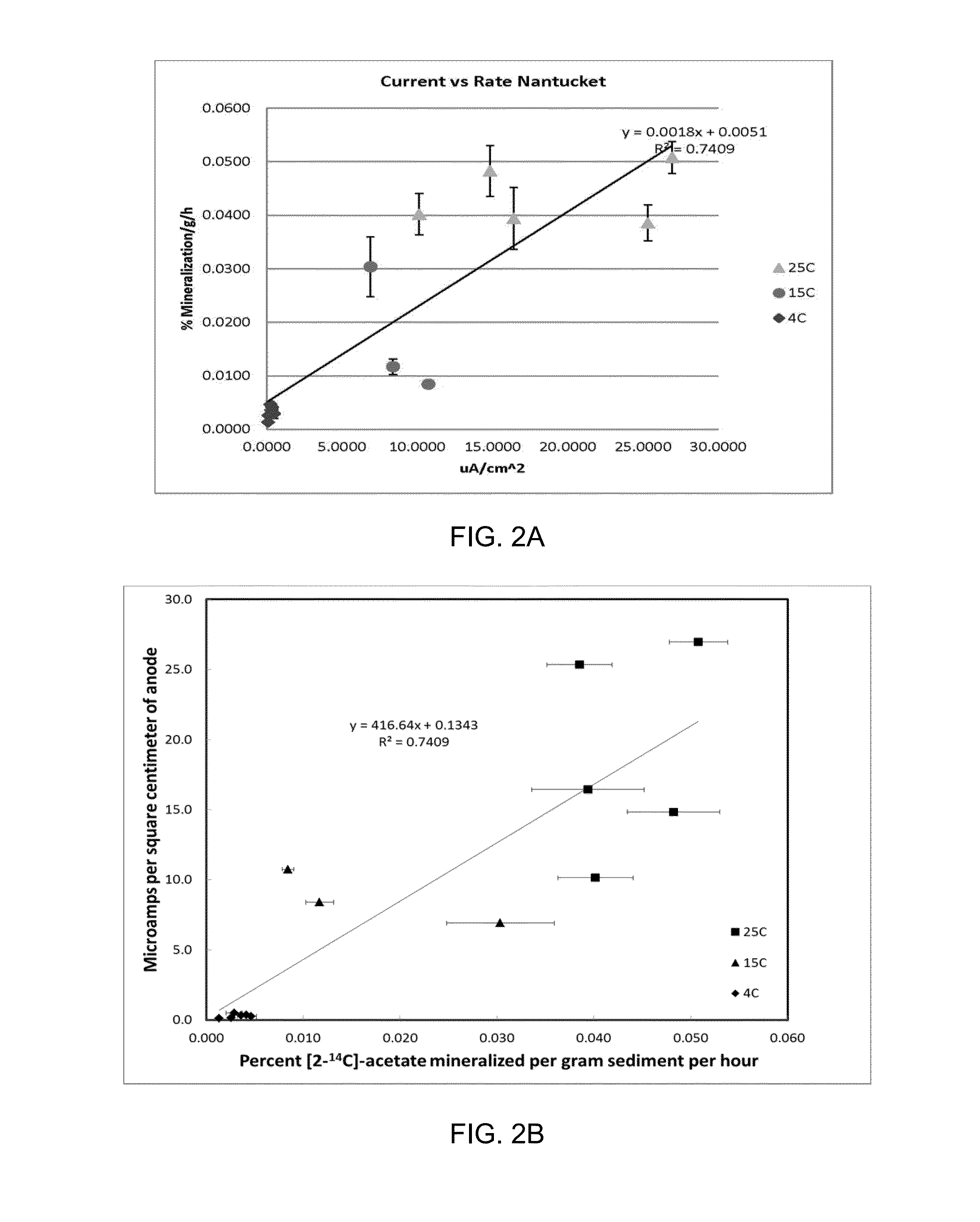Smart (subsurface microbial activity in real time) technology for real-time monitoring of subsurface microbial metabolism
a technology of subsurface microbial activity and real-time monitoring, applied in the direction of microbiological testing/measurement, biochemistry apparatus and processes, etc., can solve the problems of relying on a technically complicated poised anode, unable to make detailed time series of microbial rate measurements, and unable to assess the rate of anaerobic processes
- Summary
- Abstract
- Description
- Claims
- Application Information
AI Technical Summary
Benefits of technology
Problems solved by technology
Method used
Image
Examples
Embodiment Construction
[0028]A simple strategy to estimate in situ microbial activity has been one of the holy grails in the fields of subsurface biogeochemistry and bioremediation. We recently discovered that microorganisms associated with graphite electrodes placed at depth within the subsurface can generate readily measurable currents and that the amount of current increases in response to an increase in acetate availability in the groundwater. Acetate is a central intermediate in the anaerobic degradation of organic matter, regardless of the terminal electron accepting process. These considerations suggested that it should be possible to estimate rates of microbial metabolism in a diversity of anaerobic subsurface environments from the current produced from electrodes embedded in the site of interest.
[0029]Our SMART (Subsurface Microbial Activity in Real Time) approach was evaluated in a diversity of soils and sediments in which either iron-reduction, sulfate, reduction, or methane production was the ...
PUM
| Property | Measurement | Unit |
|---|---|---|
| resistances | aaaaa | aaaaa |
| temperatures | aaaaa | aaaaa |
| internal diameter | aaaaa | aaaaa |
Abstract
Description
Claims
Application Information
 Login to View More
Login to View More - R&D
- Intellectual Property
- Life Sciences
- Materials
- Tech Scout
- Unparalleled Data Quality
- Higher Quality Content
- 60% Fewer Hallucinations
Browse by: Latest US Patents, China's latest patents, Technical Efficacy Thesaurus, Application Domain, Technology Topic, Popular Technical Reports.
© 2025 PatSnap. All rights reserved.Legal|Privacy policy|Modern Slavery Act Transparency Statement|Sitemap|About US| Contact US: help@patsnap.com



